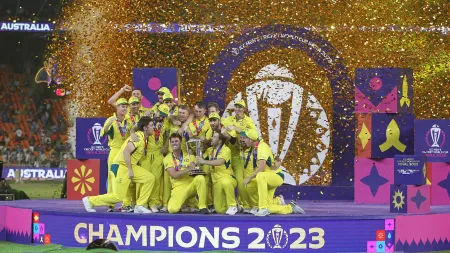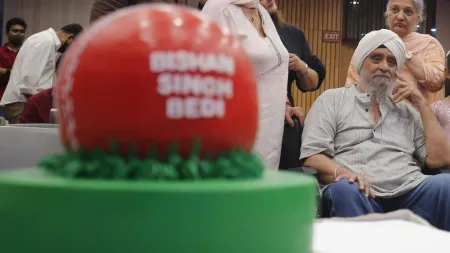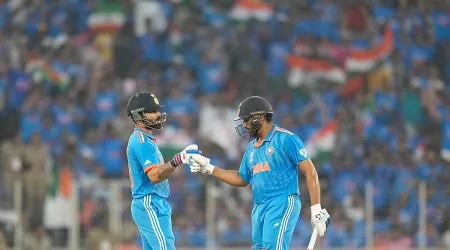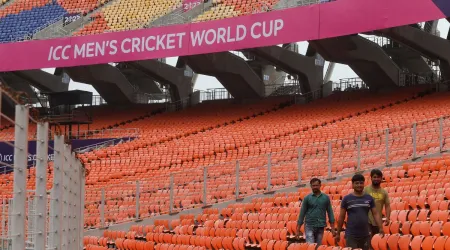- India
- International
Why it is time India criminalised doping in sports
In India, it is high time that such a strict law is put in place. Scratch the surface to find out ugly underbelly of Indian sports. In the euphoria of Neeraj Chopra winning a bronze medal at the World Championships, the country's first in nearly two decades, it is easy to be blind to the dirt around the track and field arena.
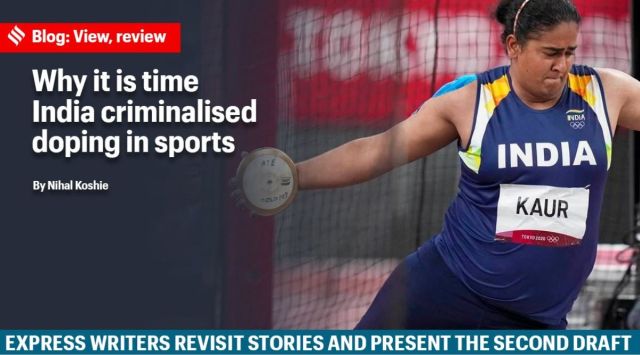 Kamalpreet Kaur finished sixth in her first Olympics in Tokyo and was poised for greater success before she tested positive for an anabolic steroid.
Kamalpreet Kaur finished sixth in her first Olympics in Tokyo and was poised for greater success before she tested positive for an anabolic steroid. Earlier this week, the Lok Sabha passed the Anti-Doping Bill. Coming in the backdrop of a number of high-profile Indian athletes failing dope tests, it was seen as a timely intervention by the parliamentarians.
The Bill gives powers to anti-doping watchdogs to search and seize. However, the initial suggestions of criminalising doping, including jail terms for athletes involved in a syndicate and coaches or support staff who supply drugs to junior athletes, has not found its way into the Bill.
Putting the fear of the law in the hearts of those willing to take shortcuts to success is a radical move adopted by a handful of countries. Germany had introduced a law six years ago to jail dope cheats. But for a German sports doctor, a mastermind of sorts who introduced blood doping among skiers and cyclists, no athlete went behind bars for using prohibited performance-enhancing substances.
Kenya too criminalised doping offences after its image as a running hub was tarnished by drug cheats.
Florence Jepkosgei Chepsoi, a marathon runner, was asked to do one year of community service for lying at a hearing and forging hospital documents.
In India, it is high time that such a strict law is put in place. Scratch the surface to find out ugly underbelly of Indian sports. In the euphoria of Neeraj Chopra winning a bronze medal at the World Championships, the country’s first in nearly two decades, it is easy to be blind to the dirt around the track and field arena.

The second and third best male throwers have both failed dope tests. The previous record holder before Chopra, is serving a ban. The latest offender among this group flopped at the Summer Games, returned home and was staying at a university campus when the drug testers knocked on his door. When he tested positive for banned substances, he reached the Athletics Federation of India and asked the officials to save him from infamy.
Discus thrower Kamalpreet Kaur’s meteoric rise had raised eyebrows. She finished sixth in her first Olympics in Tokyo and was poised for greater success before she tested positive for an anabolic steroid. Kamalpreet tried to blame nutritional supplements, a common excuse athletes resort to when the walls close in on them.
The list of dope offenders in the country seem endless and new names come to light almost every week though officials remain tight-lipped. Alarm bells should be going off in the offices of anti-doping watchdogs and of those who run the sport in the country. The aforementioned names are not of gullible juniors often victims of the greed of coaches. These seasoned athletes are supposed to be role models by being clean. Instead, they are setting a bad example.
More than one anabolic steroid was detected in the sample of one of these throwers while Kamalpreet was using a drug from the stone age, Stanozolol which gained notoriety when Canadian sprinter Ben Johnson failed a drug test in 1988.
The unprecedented number of medals the country won (7) at the Olympics was a success story. But each additional name on the doping list is making it tougher for India to shake off the bad company of Russia and Italy, the only two countries in the world with more doping violations.
Doping was in the news again just before the start of the Commonwealth Games. Two para-athletes on the way to Birmingham, a shot-putter and a powerlifter had their names struck off the team list. Around the same time, a long jumper and two women runners too tested positive. All three were to represent India at the CWG.
India is ranked third in doping, according to the latest World Anti-Doping Agency (WADA) report released in 2021. With 152 cases across disciplines, the country is marginally below leaders Russia (167) and Italy (157). On this list are not only seasoned pros but once promising Indian juniors.
These youngsters have lost their way after dope bans. They have paid the price for their blind faith in coaches who prefer taking shortcuts to earn name and fame for themselves and their academies. Those for whom a medal is a way out of poverty are easily duped. Others are happy to be taken under the wings by a coach with a reputation of fast tracking careers.
When caught, junior athletes have pointed fingers at their coaches or the support staff like physios or doctors. The number of non-athlete bans can be counted on the fingers of one hand. The German police investigation that led to the arrest of the sports doctor was named ‘Aderlass’, or blood-letting in German.
Taking a leaf out of Germany’s book will help improve India’s third rank on the infamous dope list of the world. Like all laws, criminalisation of doping comes with a rider. The law should not be misused.

















